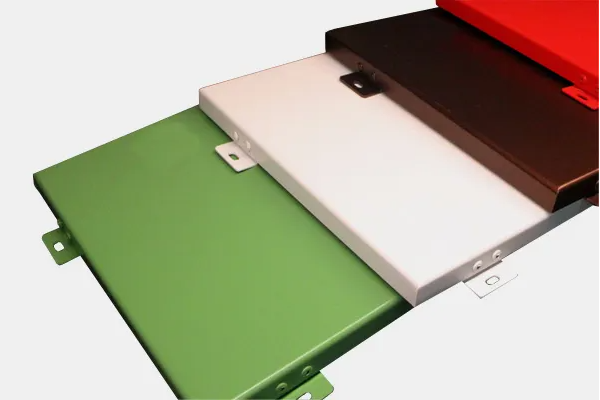Views: 9 Author: Julong Publish Time: 2022-11-04 Origin: aluminum panel systems manufacturer








The cold lamination method, hot lamination method, continuous lamination method, intermittent lamination method, and other production processes are utilized depending on the plastic core and both sides of the plate.
To begin with, cleaning aluminum coils is a vital element of the manufacturing process. The surface is covered with lubricants and antioxidants, and dust adheres to it during transportation, affecting its adherence.
Secondly, following cleaning and chemical treatment, a dense chemical protective film is produced on the coil surface to boost antioxidant characteristics and service life. Cleaning procedure: aluminum coil spray degreasing water washing neutralization chemical treatment water washing drying cooling winding
Thirdly, the cleaned aluminum coils are put into the coating machine, while high-performance fluorocarbon resin is applied on the surface. Process flow: aluminum coil → feeding → coating fluorocarbon coating → hot air circulation baking → cooling → shooting → cutting → winding.
Fourthly, The external ACP panel is coated with two layers of lacquer and primer, resulting in a highly weather-resistant fluorocarbon resin covering, polyvinylidene fluoride (PVDF), with good UV and environmental pollution resistance. This preserves the beauty of the surface. ACP panel surfaces are available in a variety of metallic colors as well as stunning marble pattern patterns. Fluorocarbon coatings are often applied to aluminum coils via roll coating and then dried at high temperatures. The equipment is continuously manufactured, beginning with a primer, then an overcoat, and lastly a surface varnish. The three layers of paint have a total thickness of 30 m. Each layer of paint needs to be baked at 200 degrees Celsius for about 60 seconds until it dries.
Fifthly, After baking, the oven is swiftly cooled with an air cooler. Interior coating materials include epoxy resin, polyester resin, and acrylic resin. A PE protection film is placed on the coated surface immediately after the primer, topcoat, and surface varnish have been applied to avoid scratching the surface during subsequent processing, transit, and installation. The protective film is self-adhesive and can be removed once installed. Aluminum coils coated with fluorocarbon resin are now ready for lamination with plastic core material. The plastic core material is a three-layer process as well, with PE plastic in the center and adhesive on both edges. The vinyl sheet and adhesive can be manufactured independently or as a three-layer co-extrusion. Step by step, a three-layer co-extruded sheet with an adhesive structure will be manufactured and then connected with the upper and bottom aluminum sheets. The thickness is 0.15mm, there are aluminum sheets on both sides, the core layer is 35mm thick, and the total thickness is 46mm. Finally, a whole panel is sliced to 1220x2440mm dimensions.